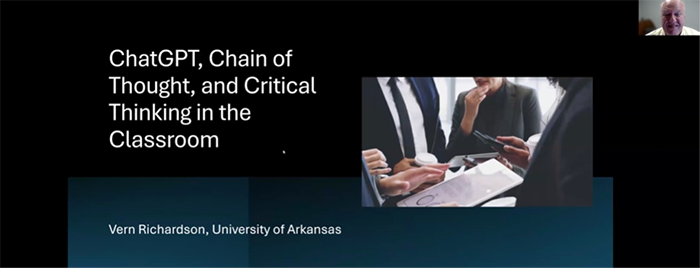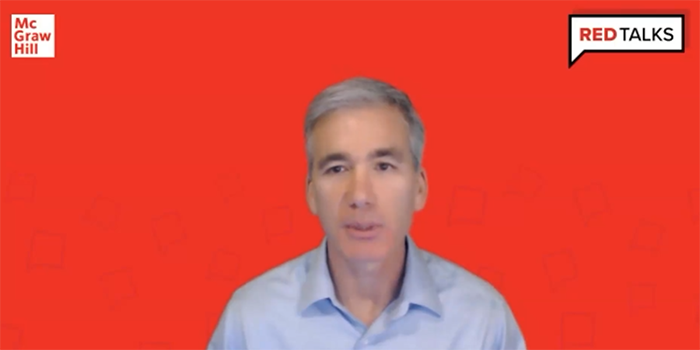DFC Spotlight: Kyle Goodin - Secrets to Increasing 2024 Accounting Enrollments at Missouri State
A journey to engaging students with real-world applications and interactive learning.

When I began teaching the Introduction to Financial Accounting course at my university, my director tasked me and my collaborator with revamping the course to make it more engaging and interesting to the students without compromising the current rigor. I spent the first semester following the curriculum from the previous faculty, and it was quickly apparent why students were not engaging with the material; it was dry beyond belief and had little to do with what anyone aside from an accountant could do with the concepts taught in the course.
For me, this helped me decide that the first course of action would be to choose a new text for the course, and from there, I started incorporating some more interesting material to emphasize how accounting concepts are applicable to all majors in our college of business. After reviewing several textbooks, we chose Financial Accounting for Managers by Thomas/Spiceland. We felt that the text’s focus on using the financial statements for decision making purposes rather than the preparation of the statements, and a choice to teach, deemphasize, or not teach debits and credits would allow for flexibility in the curriculum as well as satisfy any faculty that may have issue with the approach I was taking in the class (a deemphasis on debits and credits).
With the new text and the resources that came with it in Connect, we were able to begin teaching accounting in a way that seemed to pique the interest of many more students coming through the introductory course. We structured our approach to ensure that the accounting majors understood why the material being covered was going to be important to them moving forward in their programs, but we also made sure that the non-majors are now able to walk away with an understanding of financial statements and how they would be used in their future careers.
Once we had established this new approach and built a strong foundation to improve upon, we then began adding more into the class. The Pipeline initiative has shown that employers feel as though students are entering the workforce without a strong skillset in data analysis or the software used on a day-to-day basis. With the resources available to us in Connect, as well as the change in pedagogy, we have been able to introduce homework, quiz, and exam problems that incorporate software such as Excel, Power BI, and Tableau. While the students at the introductory level don’t need to know how to build out their own data analytics dashboards, they are able to use the integrated Tableau and Excel assignments to see how data analytics and visualization is done in real-world settings. These items have contributed significantly to increasing engagement with the students in the course and have also contributed to something I never thought I would see teaching intro courses: hearing “Thank You” from my students. Many of them are excited after taking the course because seeing the data analytics tools has helped them in other classes by making projects easier, allowing them to help someone at work, or, best of all, leading them to decide that accounting is the career path they are interested in.
While the tools in Connect have increased engagement with the students, we have found other ways to show the students how interesting and “cool” accounting can be. We have been using gameification in our classrooms to have fun in class, but we still make a point and teach them the concepts they need to know. Monopoly was a good start for us as it allowed us to interact with the students in an engaging way by just simply playing the game and asking them to write down what they did each turn. Once the turns are completed, we ask a student to come to the front of the class and explain what they did, and give us balances such as beginning and ending cash, property values, etc. Not surprisingly, many of the students cannot answer these questions, which leads to a teaching moment about how accounting information can make communicating that information much more efficient and effective. However, we have also spent a significant amount of time using AI sources such as OpenAI to help us develop other activities in class. We began by prompting Open AI with short, simple prompts such as “Create a board game to teach students about revenue recognition” and these prompts eventually became more sophisticated and specific. For example, now we would restate the above prompt as “Create three rule sets for activities that teach introductory financial accounting students the steps of the FASB Revenue Recognition process”. They aren’t always winners, but what they have done is helped us refine what we are doing during class activities. One such development was a Candyland-style revenue recognition game that uses examples that students are familiar with, which lends to the content feeling more approachable than “Company ABC and XYZ.”
When playing these games in class, students get competitive, and they are always thrilled when we can provide them with a prize of some sort. We have been able to purchase items for prizes, such as custom t-shirts that say “Accounting” or “A = L + E” on the front, through a grant that was awarded for curriculum innovation. We have also requested swag from CPA firms and other companies in our region, and they are always happy to provide us with what we need. The most popular prize that we have given out so far has been a designed note sheet that the winning team claimed and was able to use on their next exam. These were all simple things we were able to do that kept students engaged and interested in the content.
This level of engagement has borne fruit in the form of a substantial increase in our pre-enrollment and enrollment in both the undergraduate and graduate programs at my university. As of January 2024, pre-enrollment and enrollment in the School of Accountancy undergraduate program was up nearly 18%, and enrollment in the Master of Accountancy program had increased by 52%. These are certainly metrics that we can point to as evidence of our success in recruiting students into accounting, often from the General Business major, as well as retention once they complete the program; they are once again choosing a MAcc over an MBA because it aligns more appropriately with the new CPA exam and their career choices. We feel strongly that it is because of the engagement and relationships with intro students that we have seen this kind of success, and we believe that it is achievable anywhere.



